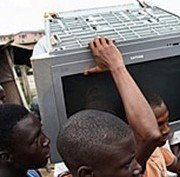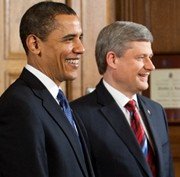
You could be forgiven for thinking that renewable energy would not be a national priority for a small, developing country such as the Solomon Islands, a small island state in the South Pacific, which has a population of just half a million people and a per capita GDP (Gross Domestic Product) of $1,900 US (source: CIA). Compare this with the US (population 304 million, GDP $48,000), Canada (33 million, $40,200) or the UK (61 million, $37,400); all rich, industrialized and technologically advanced.
Yet the government of the Solomon Islands is well aware of the negative effects that global warming can have - and is already having - on vulnerable island nations, and of the importance of developing a sustainable, renewable energy supply.
The Solomon Islands has traditionally had limited access to energy supplies, and until recently has been dependent primarily on imported fossil fuels, such as gasoline and kerosene, for power.
While the concept of renewable energy is not new to the Solomon Islands (there is already a solar power company and a hydro power centre there), the lack of financial resources among islanders and limited technology have hindered its development.
Now, helped by a venture by the Pacific Islands Applied Geoscience Commission (SOPAC), funded by the Renewable Energy and Energy Efficiency Partnership (REEEP), islanders have the opportunity to make the most of the abundant renewable energy resources naturally available to them, with the installation of solar-powered lighting systems.
A new microfinancing scheme builds on the traditional bartering system already in place in the region, where crops and commodities are traded between islanders. Villagers make a deposit on a solar lighting system, and then grow crops to equal the full value of the payments. The crops are then taken to a cash-for-crops exchange, which repays the banks.
While reducing CO2 emissions is a key priority for the Solomon Islands, renewable energy supplies can also bring other benefits such as self-sufficiency, and islanders have already experienced a boost to employment from the need for technicians to install and maintain the equipment.
Assuming the continued success of the present operation, there are plans to expand the scheme to other communities in the region. Currently 35 properties in three villages are participating.
"The success of the pilot showed that barter is a viable and most needed financial mechanism where access to cash is limited," said REEEP's Eva Oberender.
"Allowing for this innovative approach has the potential to impact many communities. Plans have already been sketched for a new phase."
Hopefully the newly-established IRENA will help bring more schemes like this to developing countries. And maybe more developed countries, such as Canada, can learn a valuable lesson from the Solomon Islanders, who are making renewable energy their top priority - even though the rising sea levels that threaten their homes will not have been caused by them but by the emissions from industrialized developed nations.
To learn more about the project, read Binu Parthan's report on the REEEP website.
See also the National Communication for the Solomon Islands for the United Nations Framework Convention on Climate Change (UNFCC).
Yet the government of the Solomon Islands is well aware of the negative effects that global warming can have - and is already having - on vulnerable island nations, and of the importance of developing a sustainable, renewable energy supply.
The Solomon Islands has traditionally had limited access to energy supplies, and until recently has been dependent primarily on imported fossil fuels, such as gasoline and kerosene, for power.
While the concept of renewable energy is not new to the Solomon Islands (there is already a solar power company and a hydro power centre there), the lack of financial resources among islanders and limited technology have hindered its development.
Now, helped by a venture by the Pacific Islands Applied Geoscience Commission (SOPAC), funded by the Renewable Energy and Energy Efficiency Partnership (REEEP), islanders have the opportunity to make the most of the abundant renewable energy resources naturally available to them, with the installation of solar-powered lighting systems.
A new microfinancing scheme builds on the traditional bartering system already in place in the region, where crops and commodities are traded between islanders. Villagers make a deposit on a solar lighting system, and then grow crops to equal the full value of the payments. The crops are then taken to a cash-for-crops exchange, which repays the banks.
While reducing CO2 emissions is a key priority for the Solomon Islands, renewable energy supplies can also bring other benefits such as self-sufficiency, and islanders have already experienced a boost to employment from the need for technicians to install and maintain the equipment.
Assuming the continued success of the present operation, there are plans to expand the scheme to other communities in the region. Currently 35 properties in three villages are participating.
"The success of the pilot showed that barter is a viable and most needed financial mechanism where access to cash is limited," said REEEP's Eva Oberender.
"Allowing for this innovative approach has the potential to impact many communities. Plans have already been sketched for a new phase."
Hopefully the newly-established IRENA will help bring more schemes like this to developing countries. And maybe more developed countries, such as Canada, can learn a valuable lesson from the Solomon Islanders, who are making renewable energy their top priority - even though the rising sea levels that threaten their homes will not have been caused by them but by the emissions from industrialized developed nations.
To learn more about the project, read Binu Parthan's report on the REEEP website.
See also the National Communication for the Solomon Islands for the United Nations Framework Convention on Climate Change (UNFCC).








No comments:
Post a Comment